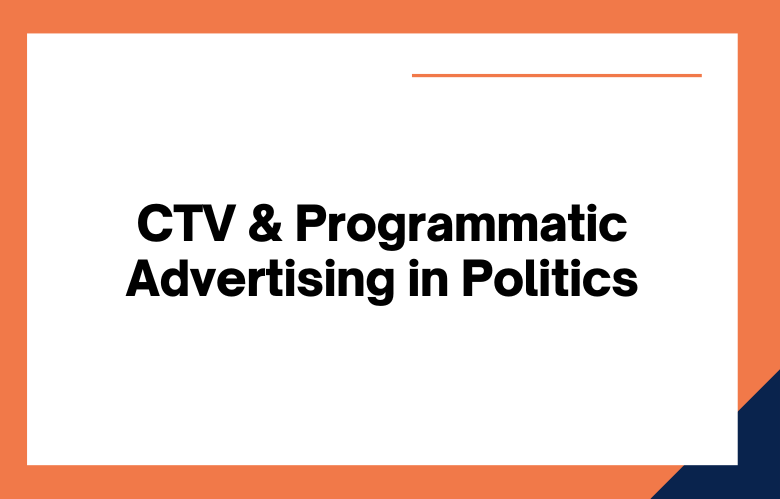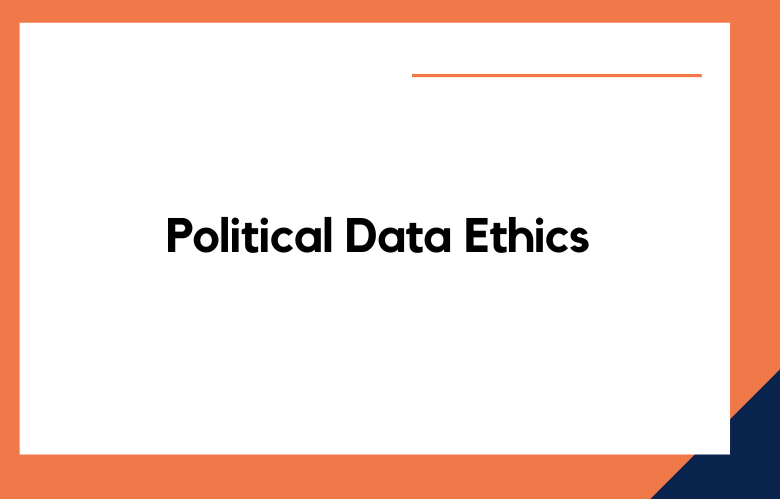CTV and Programmatic Advertising for Political Campaigns: As technology continues to evolve, so does the world of political campaigning. In the past, TV advertising was the primary way to reach voters. However, with the advent of streaming services like Netflix and Hulu, many people are cutting the cord and ditching conventional cable TV.
That’s why savvy political campaigns turn to connected TV (CTV) to reach voters, spending more time streaming online.
What is CTV?
CTV (connected TV) refers to any television that can connect to the internet—including smart TVs, streaming media players (like Roku or Amazon Fire Stick), video game consoles (like Xbox or Playstation), and even some newer models of traditional cable and satellite set-top boxes.
CTV offers viewers a better experience than traditional linear TV because it allows them to watch what they want when they want—without commercial interruption.
This is why streaming services like Netflix and Hulu have experienced such explosive growth in recent years, and it’s also why CTV is poised to take over as the preferred viewing platform for many Americans—particularly younger generations like Gen Z and millennials.
Importantly for political campaigns, this shift toward on-demand viewing means that ads placed on CTV platforms will be seen by an engaged audience who has chosen to watch long-form content uninterrupted by commercials.
In other words, when ads are displayed on CTV platforms, people will see them—rather than being ignored or fast-forwarded through, as often happens on linear TV.
CTV, or connected TV, refers to any TV connected to the internet. This includes smart TVs, streaming devices like Roku and Apple TV, and gaming consoles like PlayStation and Xbox.
In recent years, CTV ownership has exploded, with nearly two-thirds of American households owning at least one CTV device.
And as more and more people cut the cord on traditional cable TV, CTV will only become more popular.
CTV offers some advantages for political campaigns. First, it allows marketers to reach targeted voter demographics with laser precision.
For example, if your campaign targets women aged 35-54 in swing states, you can use CTV to reach that audience specifically.
CTV allows you to measure your ad performance effectively. You’ll see exactly how many people saw your ad and what actions they took afterward, making it easy to track ROI.
CTV ads are highly effective at driving conversions—research shows they are often twice as effective as traditional linear TV ads.
What is Programmatic Advertising?
Programmatic advertising refers to using software to automate the buying and placement of ads.
Previously, media buyers would manually purchase ad space from individual publishers.
However, with programmatic advertising, media buyers can use software platforms like Google Ad Manager and The Trade Desk to automatically purchase ad space on thousands of websites in real-time through an auction-based system.
This process allows for much greater efficiency and scalability than traditional methods of buying media.
Now that you know a little about how CTV and programmatic advertising work, let’s look at how you can use them in your political campaign.
The Power of Programmatic Advertising
In addition to offering a better viewer experience than traditional linear TV, CTV inventory can be purchased programmatically, meaning that campaigns can use data to target the right voter with the right message at the right time, all while optimizing in real-time to ensure maximum impact.
Programmatic advertising uses software to purchase digital advertising space in real time through automated auctions.
This technology enables advertisers to target specific audiences with laser precision based on demographics, interests, locations, behaviors, and even past voting history.
The Power of CTV Advertising for Political Campaigns
CTV offers many advantages for political campaigns.
CTV allows you to target specific demographics with your ad targeting.
For example, if you want to target women ages 18-34 who live in swing states, you can do that with CTV. That level of precision is not possible with traditional TV advertising.
CTV is less expensive than traditional TV advertising because you only pay for the ads that users can see (unlike conventional TV advertising, where you pay for ad time regardless of whether anyone is watching).
CTV offers campaign managers real-time data and analytics to see how their ads perform and make changes on the fly if necessary.
Programmatic advertising is an automated way to buy and place ads online.
In other words, it’s using software to automate buying and placing ads rather than doing it manually.
Programmatic advertising is powered by data, allowing advertisers to target specific audiences with laser precision.
For political campaigns, programmatic advertising is a highly effective way to reach voters with personalized messages relevant to them.
CTV 101
CTV is shorthand for connected TV, which refers to any TV capable of connecting to the internet. This includes smart TVs and devices like Roku, Amazon Fire, and Apple TV.
People use CTV to watch content from various sources, including traditional cable channels, streaming services like Netflix and Hulu, and even social media platforms like YouTube and Facebook.
The Benefits of CTV Advertising for Political Campaigns
There are reasons why CTV should be a part of any political campaign’s advertising strategy.
First, CTV allows you to target your audience more precisely than other forms of television advertising.
You can target viewers by age, gender, location, interests, and political affiliation with CTV.
It ensures that your ad dollars are spent wisely on reaching voters most likely to support your candidate.
Secondly, CTV provides an opportunity to reach voters who are cord-cutters or don’t have traditional cable services.
According to a recent report from eMarketer, nearly 30 million American adults do not have cable or satellite TV services.
That’s a lot of potential voters that will be missed if you’re only advertising on traditional television.
Finally, CTV ads are less expensive than traditional television ads. The rates for CTV inventory are typically based on a cost-per-thousand-impressions (CPM) model, meaning you only pay when users see your ad.
This makes CTV an efficient way to reach your target audience without breaking the campaign budget.
Targeting Voters with CTV and Programmatic Advertising
CTV and programmatic advertising offer a more targeted and efficient way to reach voters than traditional methods like broadcast TV.
With CTV, campaigns can target specific demographics, interests, and households based on viewing habits.
And with programmatic advertising, campaigns can deliver ads to specific voters based on their online behavior.
This enables campaigns to tailor their messages to specific voter groups and get their ads in front of people at the right time.
The targeting capabilities of CTV and programmatic advertising offer some advantages for political campaigns:
- It allows campaigns to save money by only targeting voters likely receptive to their message.
- It will enable campaigns to craft tailored messages that are more likely to resonate with specific voter groups.
- It provides campaigns with valuable data that they can use to refine their strategy and optimize their ad spending.
The Advantages of CTV Advertising for Political Campaigns
CTV offers some benefits for political campaigns.
CTV allows you to target specific demographics with your ad targeting.
For example, if you want to target women ages 18-34 who live in swing states, you can do that with CTV.
That level of precision is not possible with traditional TV advertising.
CTV is less expensive than traditional TV advertising because you only pay for the ads seen by users (unlike conventional TV advertising, where you pay for ad time regardless of whether anyone is watching).
CTV offers campaign managers real-time data and analytics to see how their ads perform and make changes on the fly if necessary.
Programmatic advertising is an automated way to buy and place ads online.
In other words, it’s using software to automate buying and placing ads rather than doing it manually.
Programmatic advertising is powered by data, allowing advertisers to target specific audiences with laser precision.
For political campaigns, programmatic advertising is a highly effective way to reach voters with personalized messages relevant to them.
The Future of Political Campaigning: CTV + Programmatic Advertising
As we head into 2020 and beyond, we can expect to see more and more political campaigns turning to CTV and programmatic advertising to reach voters spending more and more of their time—online streaming video content on connected TVs.
These targeted, personalized, and cost-effective methods of reaching voters will significantly impact the outcome of elections in the coming years.
Conclusion
CTV + Programmatic Advertising = The Future of Political Campaigning
Suppose you’re a political campaign manager who wants to stay ahead of the curve and be at the forefront of political campaigning technology.
In that case, you must use connected TVs (CTV) and programmatic advertising.
These targeted, personalized, cost-effective methods of reaching voters will surely give your candidate a significant advantage in future elections.
Don’t wait; use CTV and programmatic advertising in your next campaign!
CTV and programmatic advertising are essential tools for any political campaign.
With the proper planning, they can help you reach your target voters and get your message out there.
If you need help with your political campaign, contact us today.
We have a team of experienced who can help you execute a successful CTV or programmatic ad campaign.
Call: +91 9848321284
Email: [email protected]











